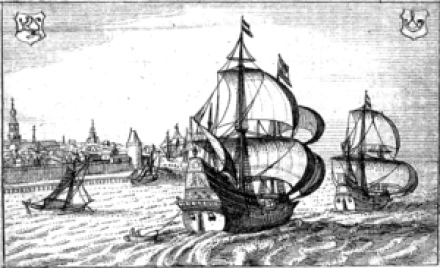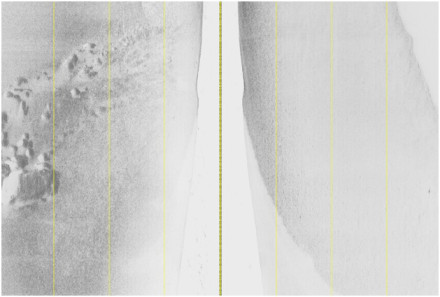History
Expedition
On June 14, 1615, two small Southern Company ships, the Hoorn and the Eendracht set out for the East Indies from the Dutch city of Hoorn. As Dutch naval trade around the Cape of Good Hope was exclusive to the East India Company (VOC), the expedition was aimed at finding an alternative route, around South America. A second objective was to find the legendary South Land or Australia.
On December 6, the two ships reached the Patagonian coast. While resupplying, both vessels were hauled onto the beach for cleaning and caulking. As the Hoorn's hull was being fire cleaned, an unexpected squall set fire to the yacht. The crew was unable to extinguish the flames and the ship largely burned to the ground. Despite this unfortunate event, the sailors succeeded in completing the expedition on the Eendracht. America's southernmost tip was named Cape Horn, after the home town of the expedition, although the ill-fated ship of the same name may also have come to mind.

When the expedition arrived at the Maluku Islands, however, the sailors did not receive the warm welcome that they were hoping for. The local VOC authorities seized the ship, its cargo and its maps, on suspicion of using their patented trade route to the East Indies. The expedition leaders Willem Cornelisz Schouten and Jacob le Maire (who had died while being held at Batavia) were not rehabilitated until years later.

Discovery
In the summer of 2003, Argentinean archaeologists received word from an inhabitant of Patagonia, who reportedly found several ceramic shards on the shores of the Deseado River. When they investigated further, it turned out that similar pottery had found its way to other local communities. Items recorded at the site by the archaeologists included ballast stones, iron and copper nails and coal, identified as belonging to the wrecked vessel. The ceramic fragments were found to be early 17th-century German stoneware, which at the time was used extensively in Dutch ships. As the archives mentioned only one Dutch loss at Cape Horn in the 17th century, the area was quickly associated with the Hoorn.

Description
De Hoorn was a small warship (yacht) associated with the Dutch Republic.

| People on board | 22 |
|---|---|
| Tonnage | 100 ton (50 last) |
Status
- Condition: (Partly) preserved in situ, published archaeological documentation available
- Involved institutions: Underwater Archaeology Program of the National Institute of Anthropology
Location

Research expedition
In 2005 and 2006 a team of Argentinean and Dutch archaeologists set out to find the wreck of the Hoorn. An intensive survey of the shores and shallow waters of the Deseado River resulted in some 500 finds, hinting at the yacht's location. Using sonar equipment, the exact location of the Hoorn could eventually be pinpointed. The condition of the wreck remains unknown, as it lies safely buried beneath a thick layer of sediment, in the middle of a nature reserve.

References
- Spruit, R. & Manders, M. (2007).
De zoektocht naar de Hoorn.
De Bataafse Leeuw. - De ontdekkingsreis van Jabob Lemaire en Willem Cornelisz. Schouten in de jaren 1615 en 1616.